Gardening can be a very personal endeavor. There are some who love the joy and satisfaction of growing vegetables in our desert environment. There are others who focus on ornamentals and the beauty of flowering cacti. Most gardeners not only focus on particular plants, but over the years, they collect a bevy of favorite gardening tools.
This is one of my favorite gardening tools and time savers.
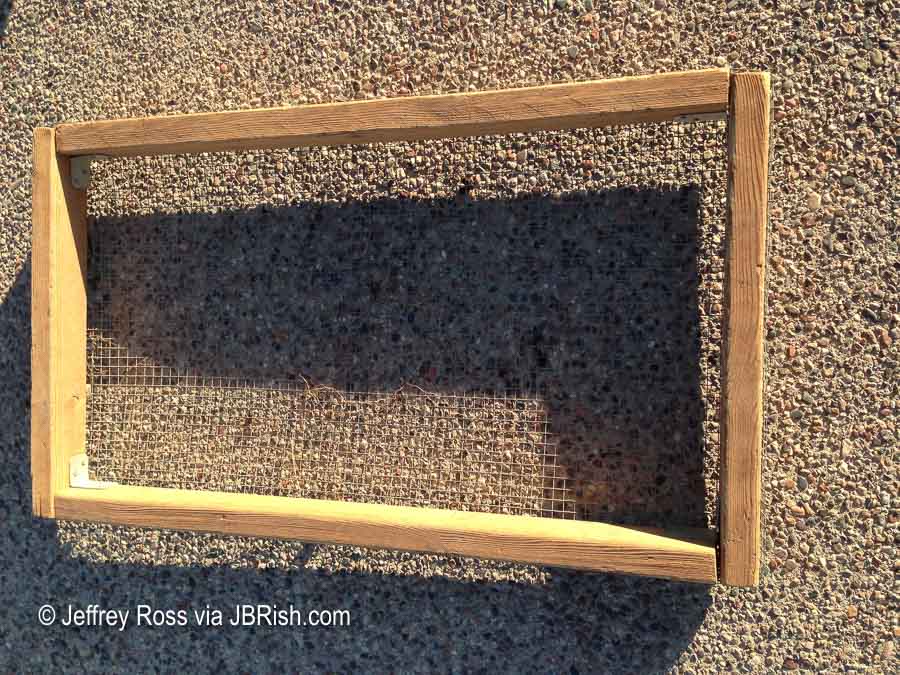
Wherever I have gardened, one of the first things I have done was build a dirt sifter. I use it many times each season. Perhaps my workflow differs from yours so let me explain…
Our agave collection, for example, gifts us with pups and after they are potted up and cared for a while, they grow their own set of “offspring” and need to be separated and shared.

The rootball is often dense and needs to be dismantled.
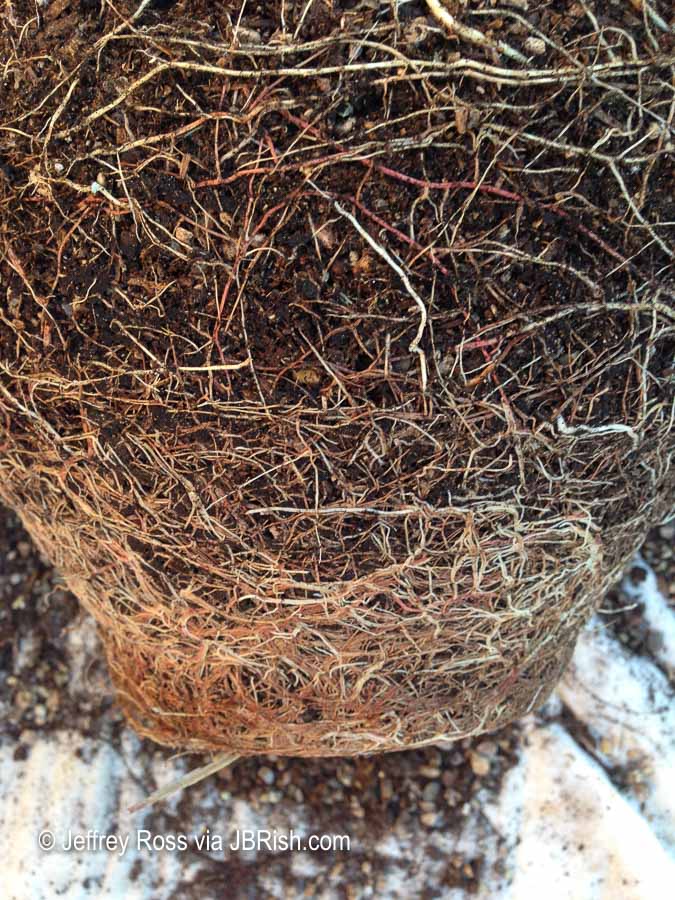
We first separate as many of the viable plants and roots as possible for replanting and/or sharing.

The next step is to place the densest part of the root ball on top of the sifter, break it up with a trowel and then rub it back and forth so the soil is released in to a garden cart or cement mixing bin (which we use to mix soil).
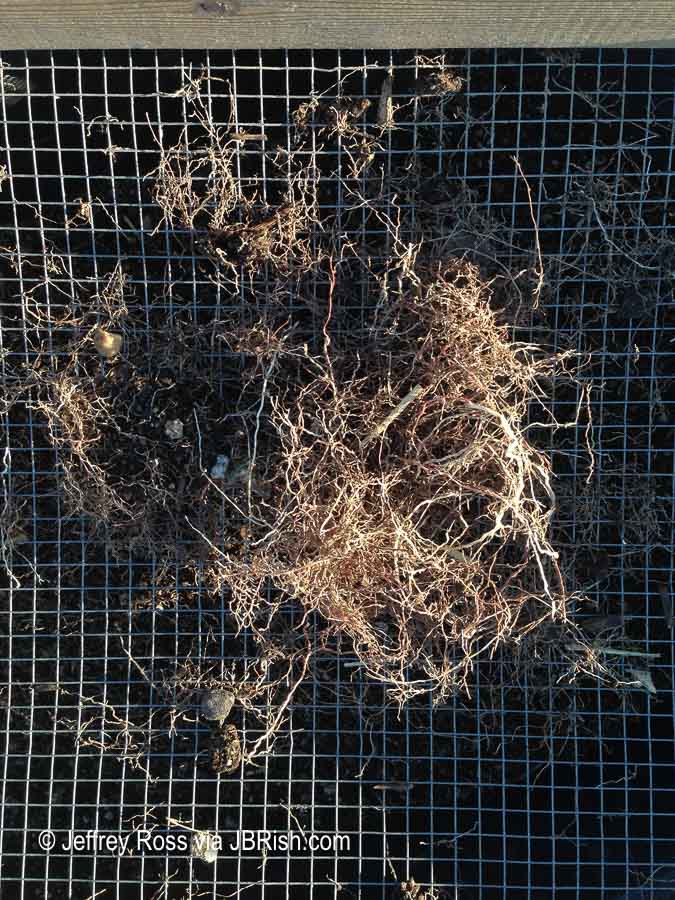
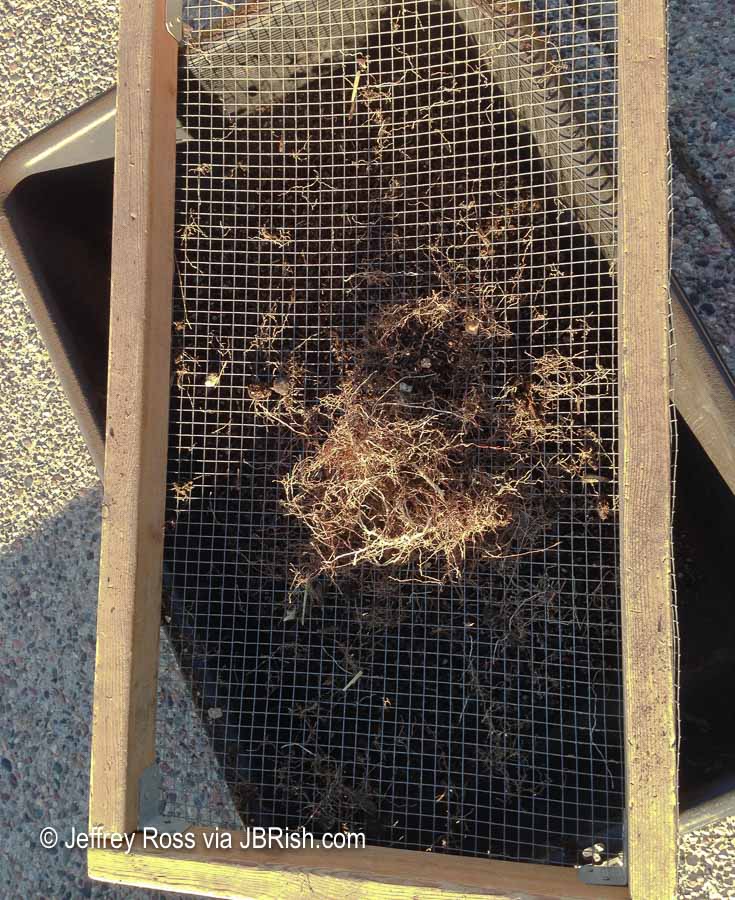
In the end we are left with a yield of reusable soil mix. The old roots and debris are discarded. More about the soil mix in a bit.
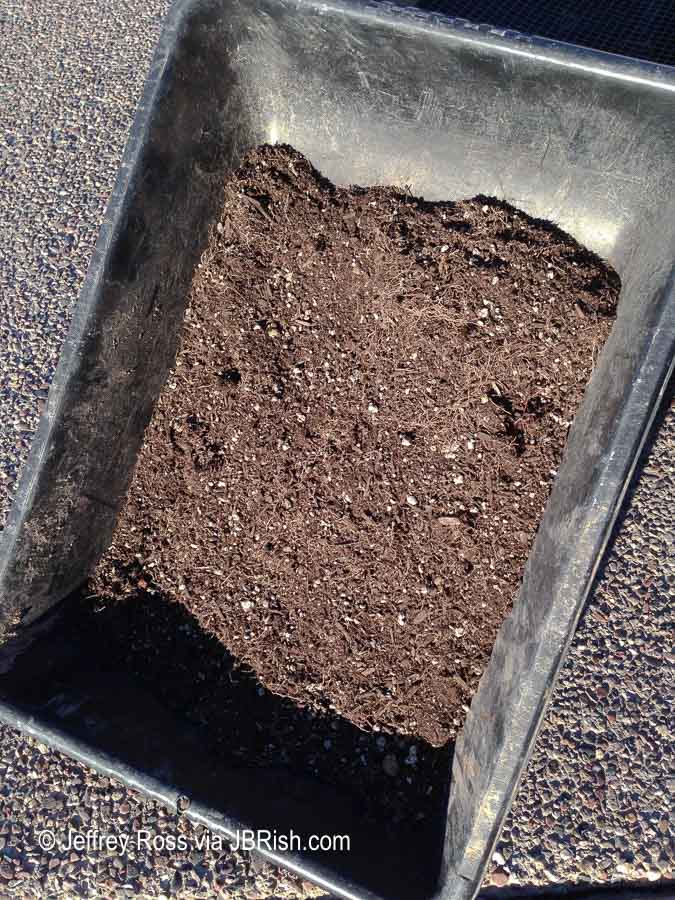
If the soil is wet or damp, it is placed on the side of our house where the afternoon sun warms and dries it.

Once the soil is dry, we place it in a large covered trash can to be used in our planting medium for new plants. Once again, if you speak to a dozen gardeners, you will probably get thirteen recipes for various plant mixes. This is a very individual preference, but since you ask, here is one I use for non-succulent plants.
– A five gallon bucket is used as the basic unit –
- 1/3 – old plant mix that has been sifted
- 2/3 – new plant mix – I use the Natural & Organic Potting Soil purchased from Summer Winds Nurseries.
- 2/3 – of a large coffee can of gravel 1/4″ +/- which I purchase in bulk from MDI (2815 E. RoseGarden LN, Phoenix , AZ 85050). This increases drainage and provides a small buffer against over watering. *Adjust as necessary
- 1 – Large coffee can of used coffee grounds (when available).
- Mix all the ingredients very well until it appears even in texture and color. Don’t stint on this step. I use a large cement mixing bin and a standard shovel or in the large garden cart.
- For flowering plants I use a dose of super bloom fertilizer following the recommended amount on the container UNLESS experience has dictated otherwise. This is added after the plant is potted and just before watering-in.


Let’s talk about the sifter. We are not building a piece of furniture here so it doesn’t have to be pretty or perfect. Good enough will be just fine for this project.
As you can see, the frame is made from simple 2 x 4’s. One will probably do, but decide how large you want it. Place the pieces of the frame on a flat surface and use L-brackets to fasten the sides.
NOTE – Our sifter is 35″ by 20″ after assembly and accounting for the width of the wood. The sifting surface is relatively smaller. Just decide how large you want it and purchase the appropriate amount of wood.

I then take one longer screw and screw it into each corner of the frame. Drill a pilot hole to assure alignment and to help keep the wood from splitting.
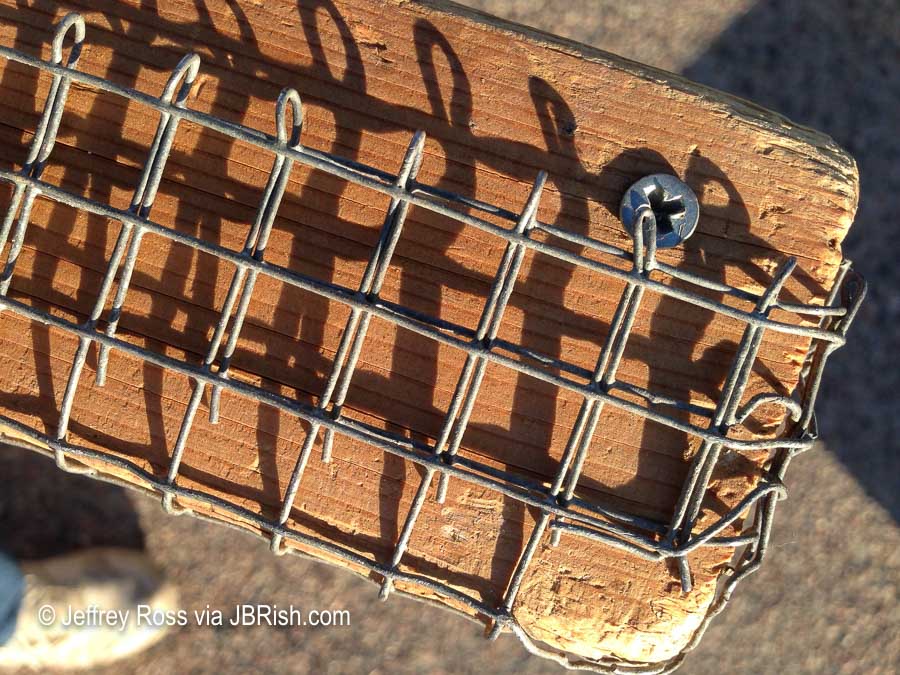
I purchased a roll of 1/2″ hardware cloth that we use for several different gardening tasks and cut it so there was an overlap around all of the sides of the frame. Be careful to trim off any pieces that stick out beyond the grid or you will be creating needles that will puncture gloves and fingers alike.
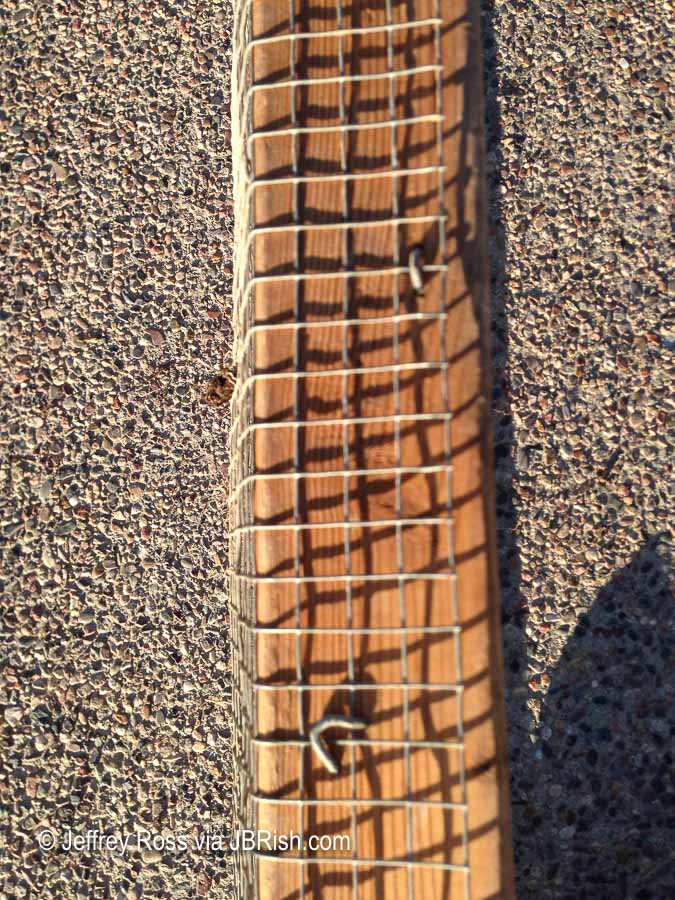
I then secured the hardware cloth using 3/4″ hot dipped, galvanized poultry net staples. Tap them in as far as they will go. It is OK if they stick out a bit as long as they don’t snag debris, gloves, etc. If you prefer, just hammer them flat so they don’t stick out as much.
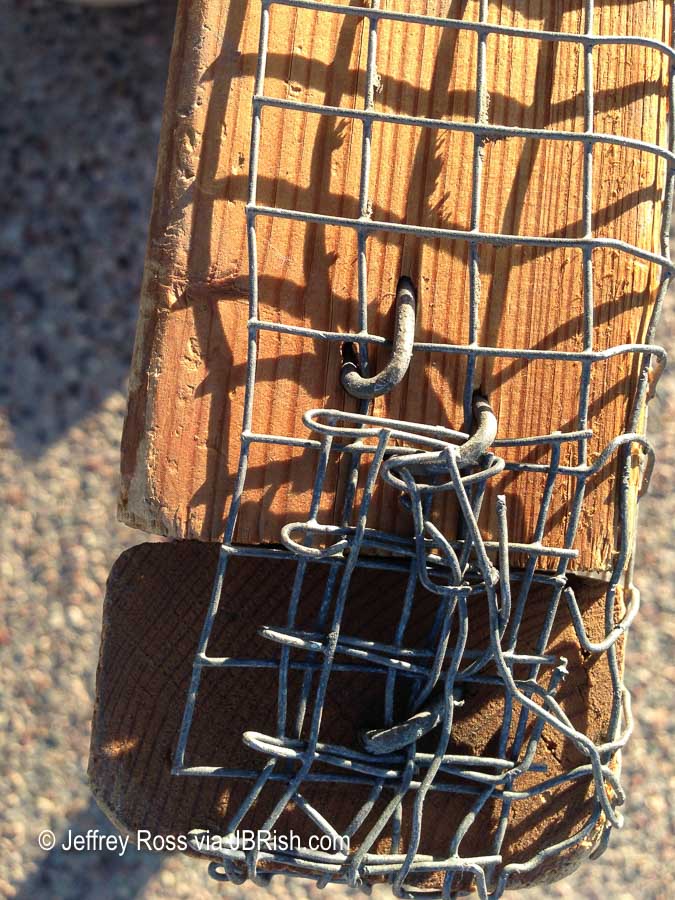
Use a wire snip to cut the corners and fold them over similar to wrapping a present and secure the corners well with the staples mentioned above.
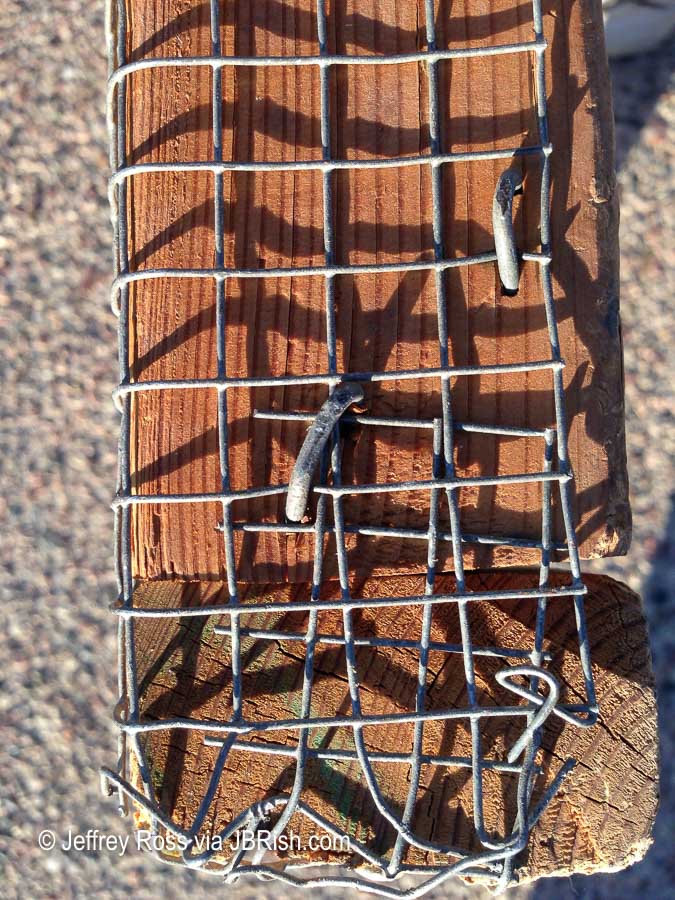
NOTE – In one iteration of building a sifter, I erroneously thought that if one layer of hardware cloth was good, two would be better so I assembled the frame using two layers of hardware cloth. That was a big mistake because debris was caught between the two layers. One layer is more than sufficient.
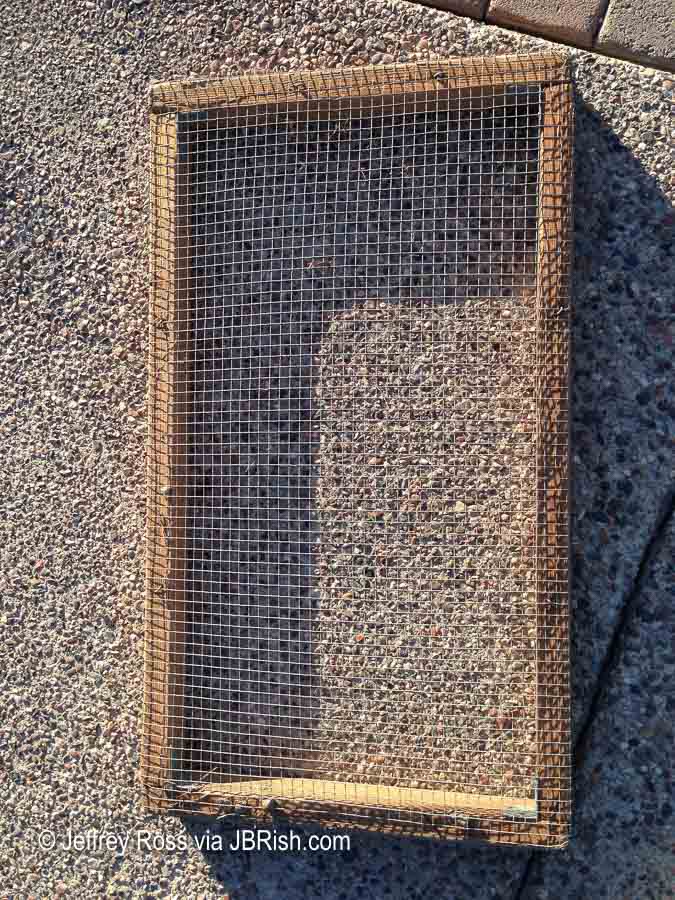
Of course, the sifter isn’t used only for breaking root balls, it is also great for sifting native soil and/or removing large rocks from a pile of dirt. It can even be turned upside down and used to protect seeds from birds or small rodents. Just be sure to place rocks on each corner so the rabbits and squirrels have less of a chance of moving the barrier.
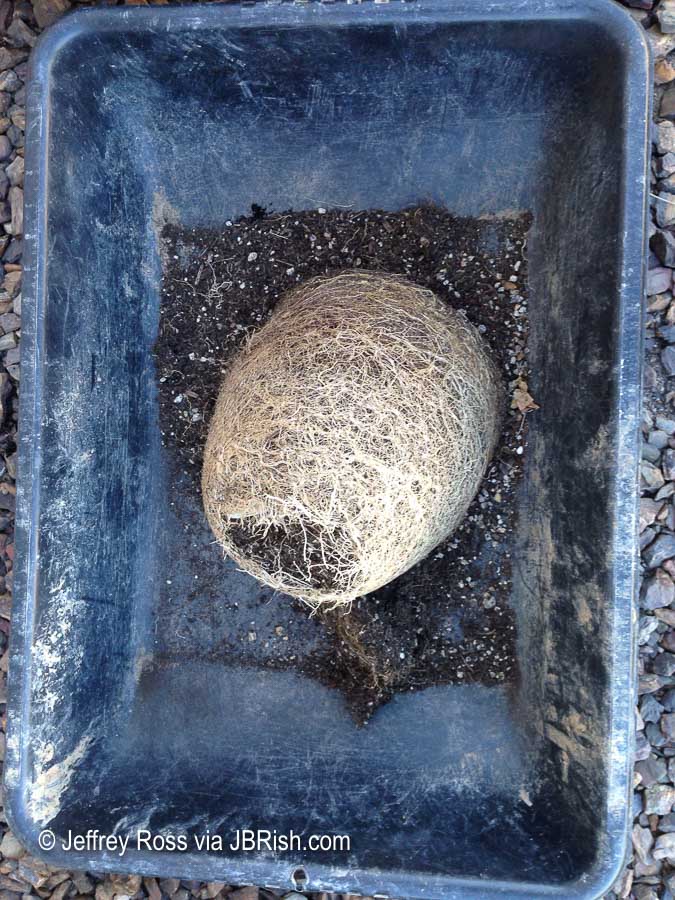
NOTE – This procedure would be the same no matter where you garden. The only modification you would need to make would be in the planting mix and I am sure that you probably have your own favorite variation.
If you have any questions, leave them in the comment section and I will answer to the best of my ability.
Read more gardening posts HERE
**********
All original content on this blog is copyrighted by Jeffrey B. Ross with ALL Rights Reserved. While reference links back to JBRish.com are appreciated and encouraged, please acquire approval for any reproduction of original content from this website.
©Jeffrey B. Ross 2014 – 2019 – JBRish.com
